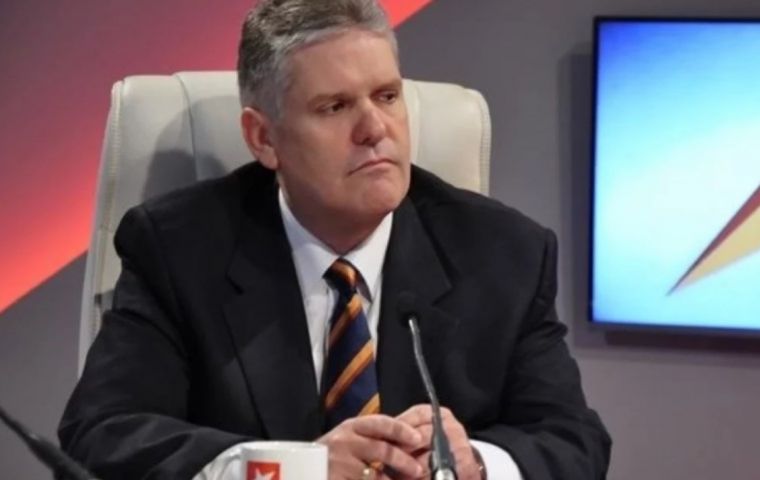MercoPress. South Atlantic News Agency
Cuba devalues its currency and makes the US dollar legal tender for shopping
 Economy Minister Alejandro Gil termed measures necessary to face an “exceptional situation,” during an evening broadcast on state television.
Economy Minister Alejandro Gil termed measures necessary to face an “exceptional situation,” during an evening broadcast on state television. Cuba said this week it will allow some stores to sell food, personal hygiene and other consumer goods in U.S. dollars and will eliminate a 10% tax on the greenback, an effort to rake in more hard currency to purchase goods abroad.
It is one of a list of reforms the Communist government said it would detail and implement in the coming months such as the expansion of the private sector that Economy Minister Alejandro Gil termed necessary to face an “exceptional situation,” during an evening broadcast on state television.
Cuba, which monopolizes retail and foreign trade, faced a liquidity crisis even before the coronavirus pandemic shuttered tourism and hit other revenue earners with the implosion of ally Venezuela’s economy and the tightening of the decades-old U.S. trade embargo under President Donald Trump.
Pandemic fallout has worsened shortages of food, medicine and other goods and long lines at retail outlets. Cuba’s economy is forecast to decline nearly 10% this year after stagnating in 2019.
The government opened around 80 “dollar stores” late last year selling items such as home appliances, motor bikes and car parts that it buys abroad in tradable currencies. It added used cars earlier this year.
There are currently two currencies, the peso and the convertible peso, which is valued at 24 pesos, circulating in Cuba. Possession of the dollar and other tradable currencies is legal, but they have not been deemed legal tender for purchases for years.
Cubans who patronize the dollar stores need a dollar-denominated bank card from an account opened with tradable currencies, such as the dollar or euro. Tradable currencies may be obtained through offshore remittances or other means such as exchanging local pesos on the street.
The government claims the convertible peso is equal to the dollar, but imported goods, when available, have huge mark-ups as they are purchased in tradable currencies. The peso and convertible peso have no value abroad.
Pavel Vidal, a former Cuban central bank economist who teaches at Colombia’s Universidad Javeriana Cali, said Cuba was returning to a strategy that worked in the 1990s after the fall of the Soviet Union left its local currency useless and it allowed dollars to circulate freely.
“It is an option that may partially work in the short term, but it generates segmentations, more distortions and does not guarantee inclusive and sustainable economic growth in the long term,” he said.




Top Comments
Disclaimer & comment rules-

-

-

Read all commentsSo you have to put your tradable currency into a bank account to spend it.
Jul 19th, 2020 - 12:41 pm 0Hmmm.
So for ex., if a relative in Miami sends them USD, or if they buy dollars on the black market, i.e, “such as exchanging local pesos on the street”, they need to allow the government to “look after it” for them, in order to be able to spend it....legally....that's what you call a democracy.
Jul 19th, 2020 - 10:48 pm 0More like currency controls combined with being able to check who has dollars and how much.
Jul 22nd, 2020 - 03:27 pm 0Didn’t Argentina “appropriate” all dollar accounts at one time?
Commenting for this story is now closed.
If you have a Facebook account, become a fan and comment on our Facebook Page!